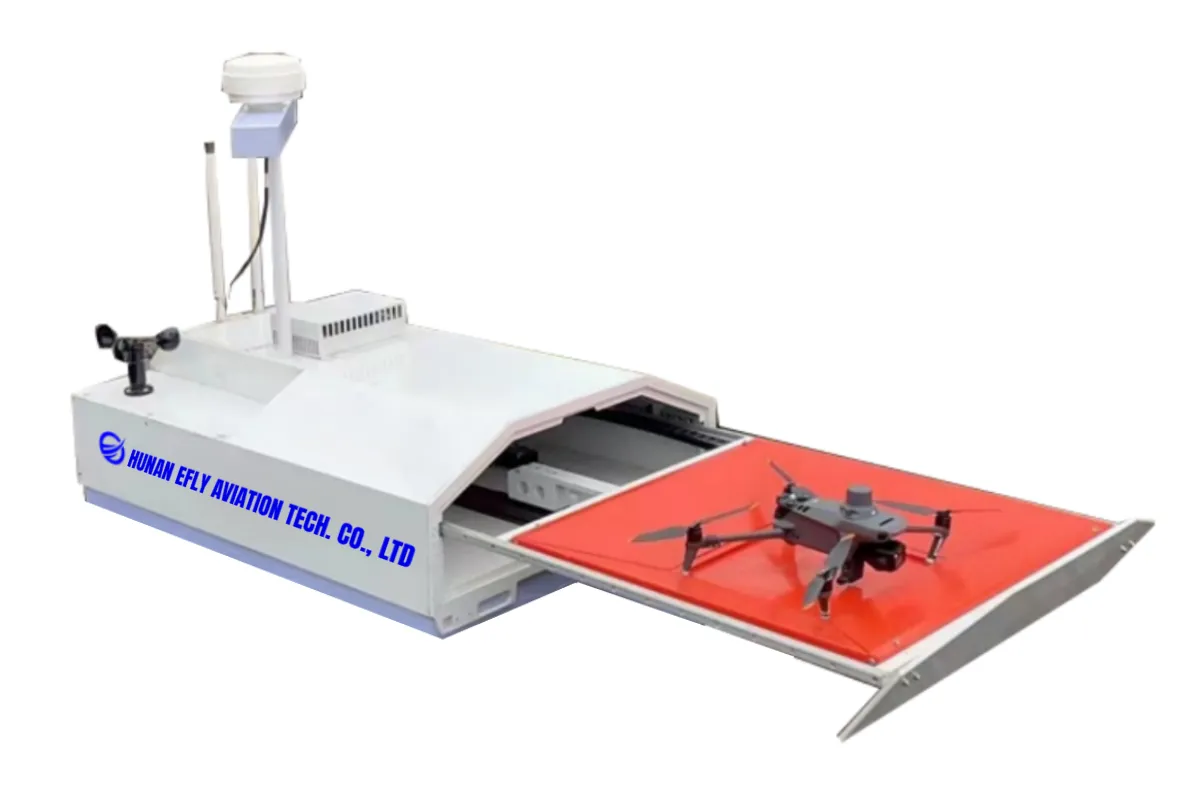In drone inspection, a drone hub is more than a charging station. It is a smart and connected system that helps drones work better. With the right technology, drone hubs can make inspections faster, more accurate, and more reliable. Based on EFLY’s ten years of experience, here’s a practical look at what a drone hub can do.
1. Multi-Drone Scheduling and Task Optimization
1.1 Smart Task Allocation
The drone hub uses AI to divide inspection areas into smaller zones. Each zone is given to a drone based on terrain, size, and required detail. For example, one drone needs 8 hours to cover 100 km². A hub with multiple drones can finish in 2 hours.
Tech Note: SLAM technology helps drones plan paths and avoid missing or overlapping areas.
1.2 Coordinated Heterogeneous Drones
The hub supports both fixed-wing and multirotor drones. It assigns the right drone for each task.
- Fixed-wing drones cover wide areas fast (up to 200 km per flight).
- Multirotor drones handle details in narrow or complex spaces like cities or slopes.
Tech Note: 5G networks allow drones to share data instantly. This keeps inspection results complete and consistent.
2. Edge Computing and Real-Time Data Processing
2.1 Local Data Processing
Each hub includes a GPU server that begins data processing before the drone lands. This includes:
- Cleaning point clouds by removing noise like trees or vehicles.
- Stitching images into maps using photogrammetry.
This setup reduces post-processing time by more than 50%.
Tech Value: Edge computing means no internet or cloud server is needed. Even in remote areas, data is processed on site.
2.2 Real-Time Quality Check
The hub checks incoming data like GPS accuracy and sensor health. If there’s a problem, it sends the drone to fly again.
For instance, if LiDAR data is too thin, the hub triggers a re-scan to fill the gap.

3. Power Management and Environmental Resilience
3.1 Distributed Energy Network
The hub includes solar panels and batteries, so it runs even without a power grid.
Tech Breakthrough: Power is shared smartly. Critical tasks get priority. One solar panel setup can work for a full year.
3.2 Built for Harsh Environments
The hub has IP67 protection and thermal control. It operates reliably in temperatures ranging from -20°C to 55°C, with resistance to dust, foreign objects, water ingress, and rainfall (up to 50mm/day, moderate rain), as well as corrosion resistance (suitable for outdoor use in coastal areas).
4. Integration With Real Inspection Projects
Case 1: Landslide Monitoring Network
- Scene: A mountainous area where drone hubs were used to monitor landslides.
- Tech Use:
- Hub A tracks weather and sends more drones during rain. Its LiDAR scans detect ground movement with millimeter accuracy.
- Hub B spots unusual patterns and directs drones to capture close-up images.
- Result: Early warning accuracy rose to 95%. Response time dropped to 4 hours.
Case 2: Smart City Digital Twin
- Scene: A city development project using drone hubs on rooftops to scan 200 km².
- Tech Use:
- The hub’s edge computing created 3D models and synced them with BIM. It detected 23 design issues.
- Drones scanned heat zones at night using infrared. These insights helped optimize the layout of green spaces.
- Result: The project finished 6 months earlier. It saved around USD 2 million.
Conclusion
Drone hubs combine smart scheduling, edge computing, and power control into one system. They can triple inspection efficiency and cut costs by 60%. Without hubs, drone operations face limits in speed, safety, and scale. As AI and IoT become more connected, full automation in inspections is getting closer.
EFLY’s drone hub works with any industry and fits into all inspection workflows.
